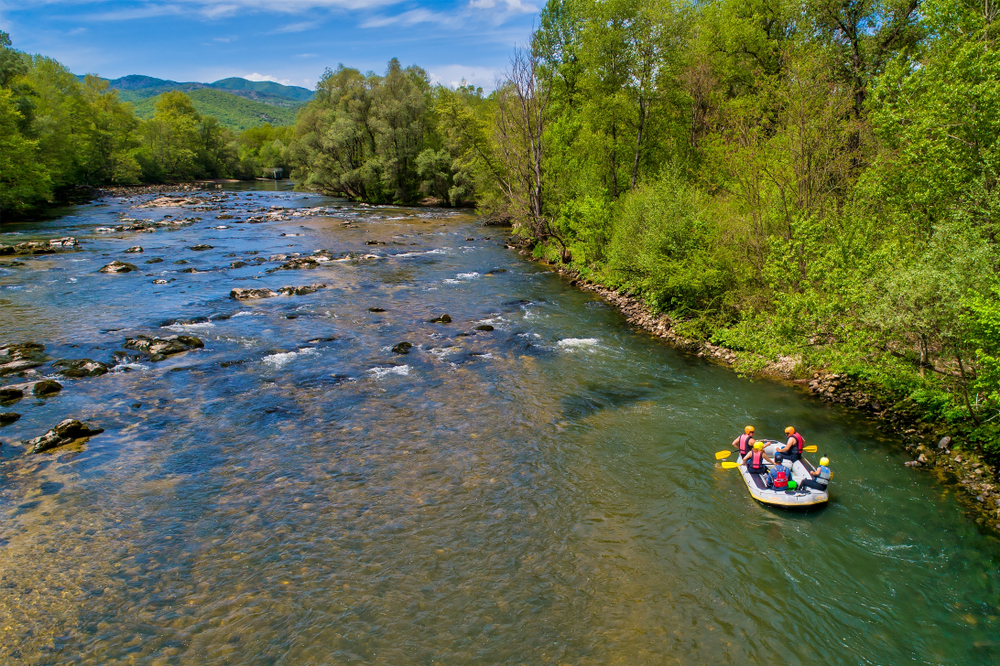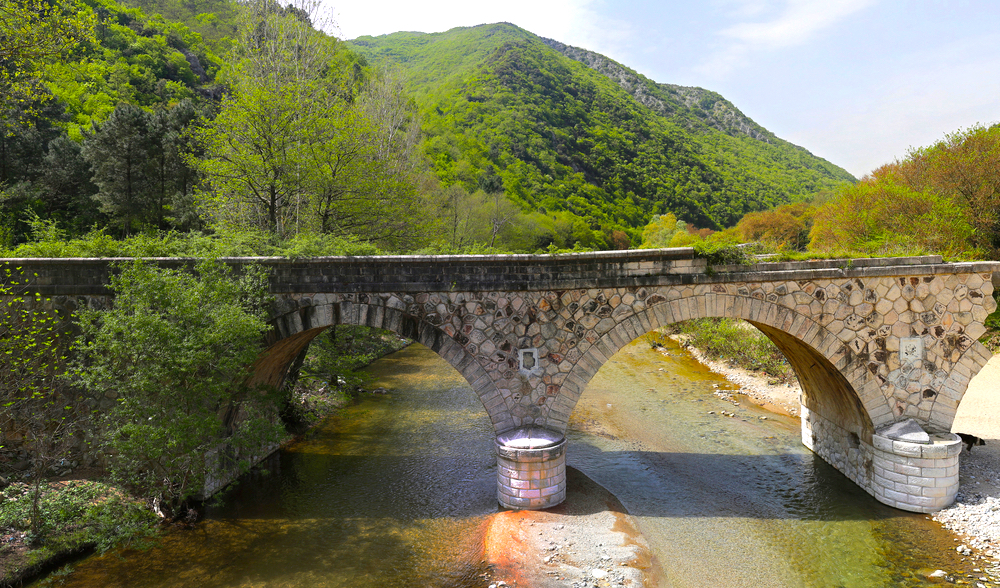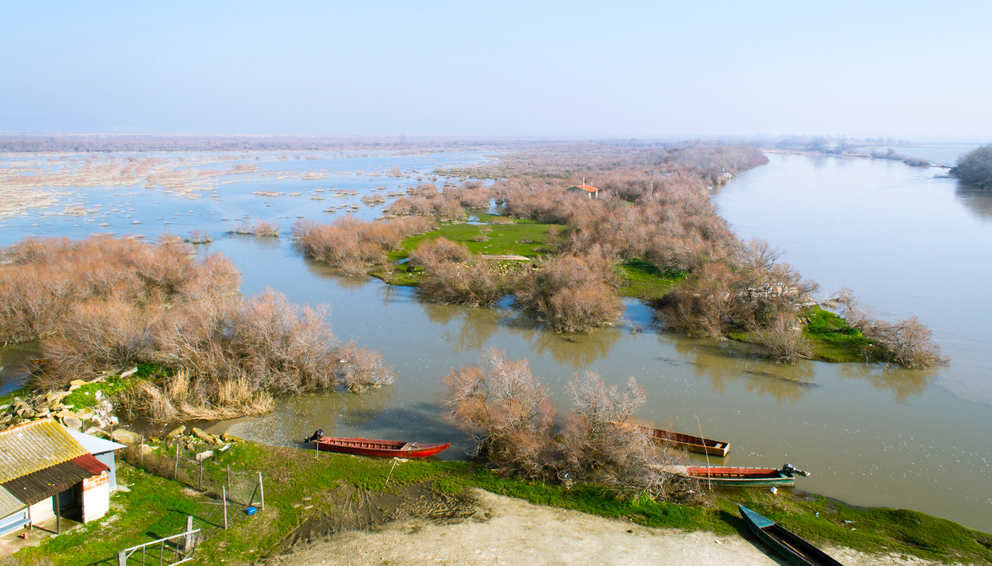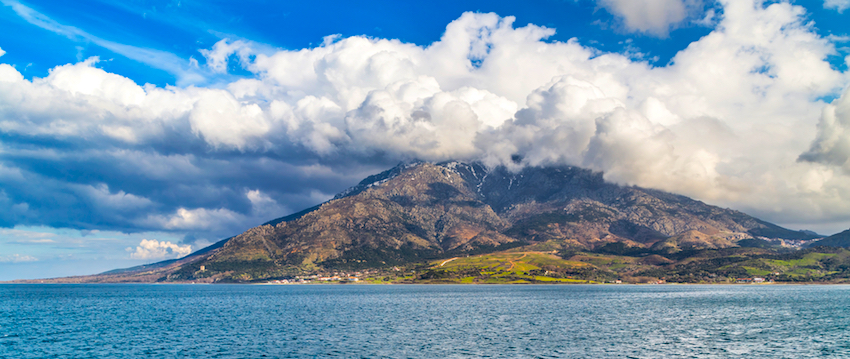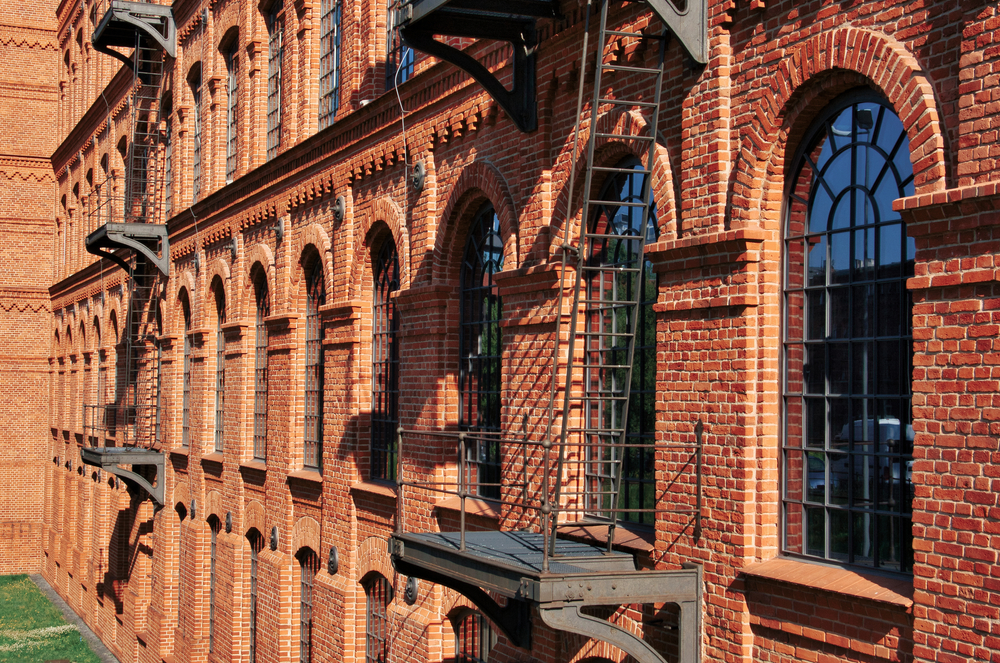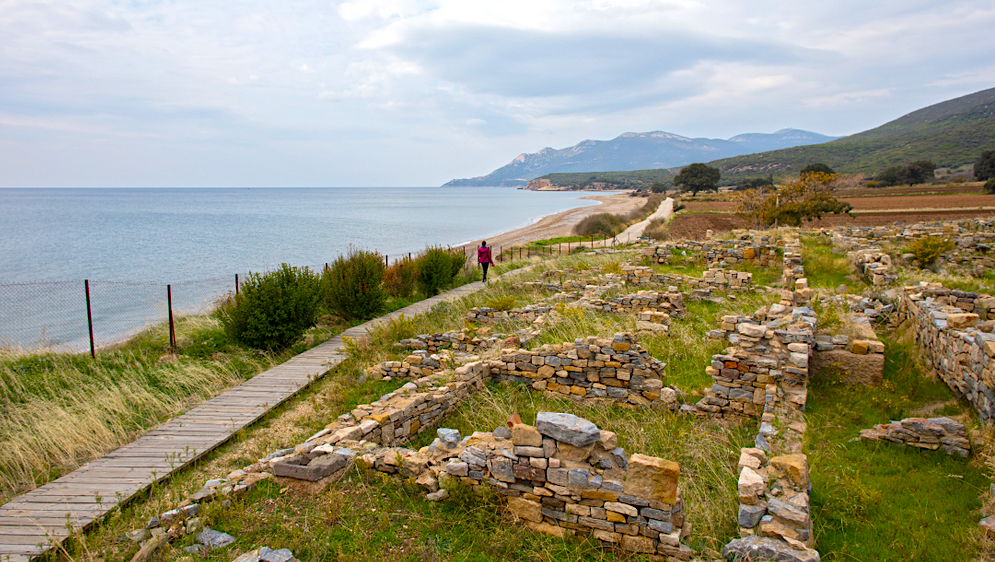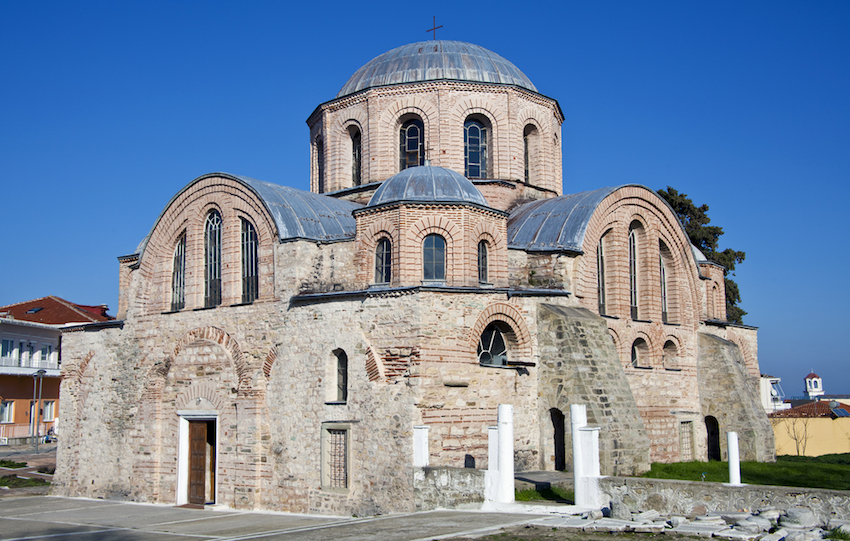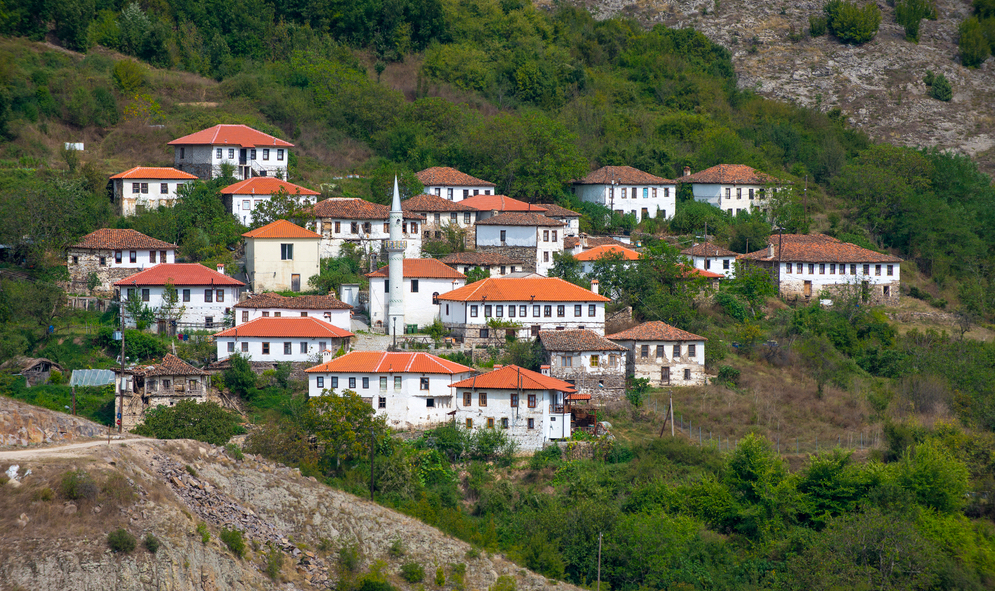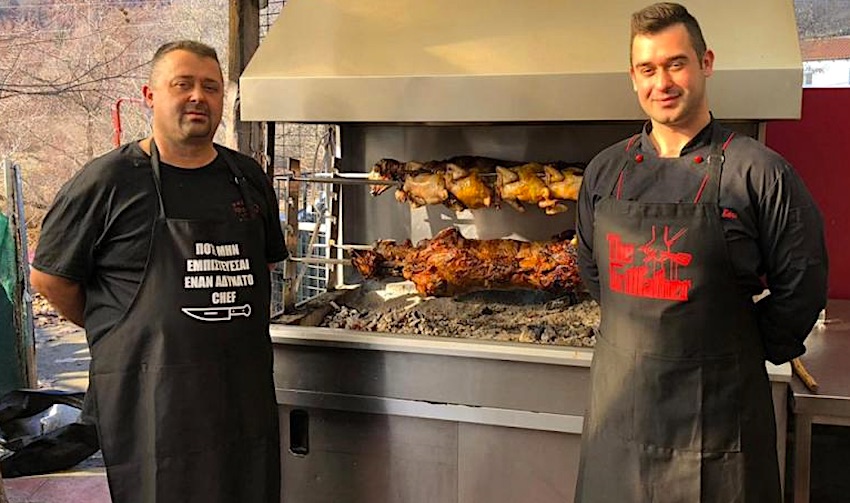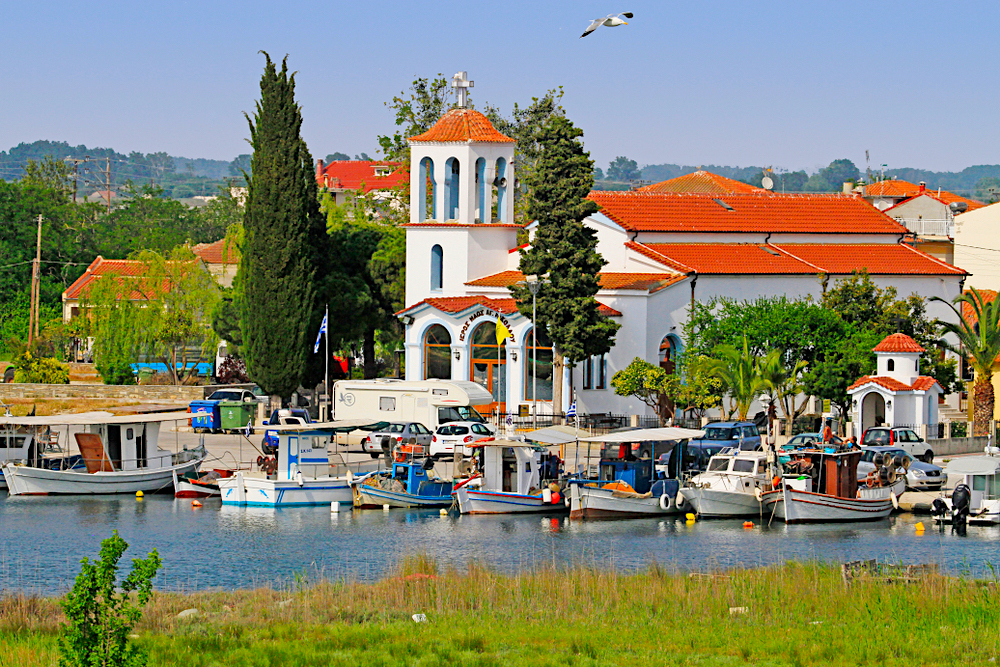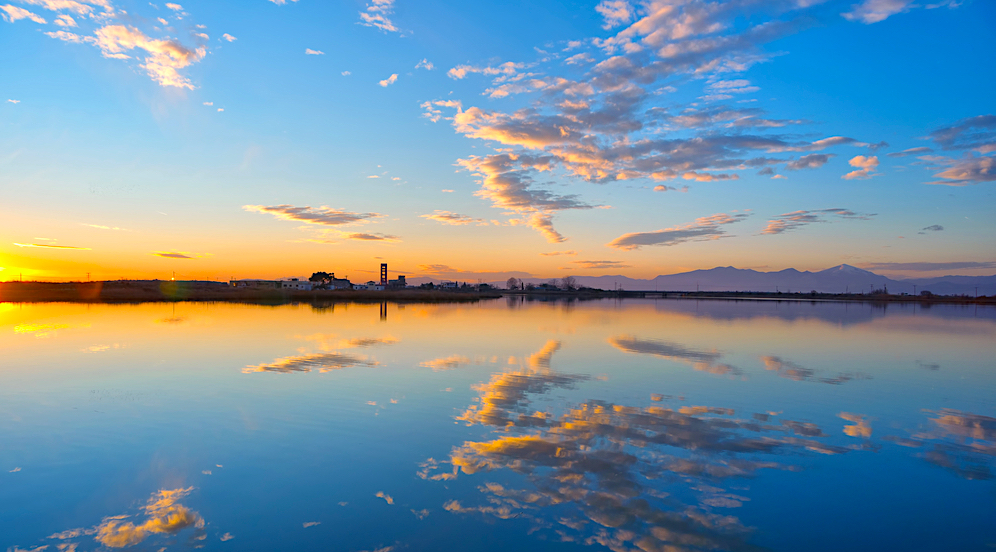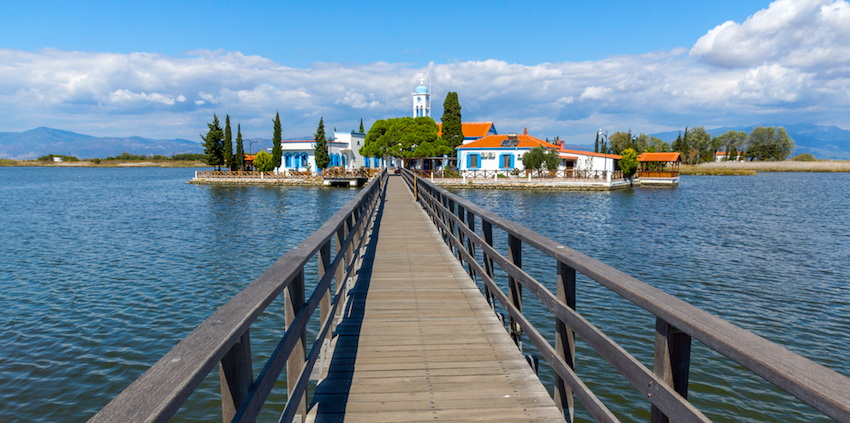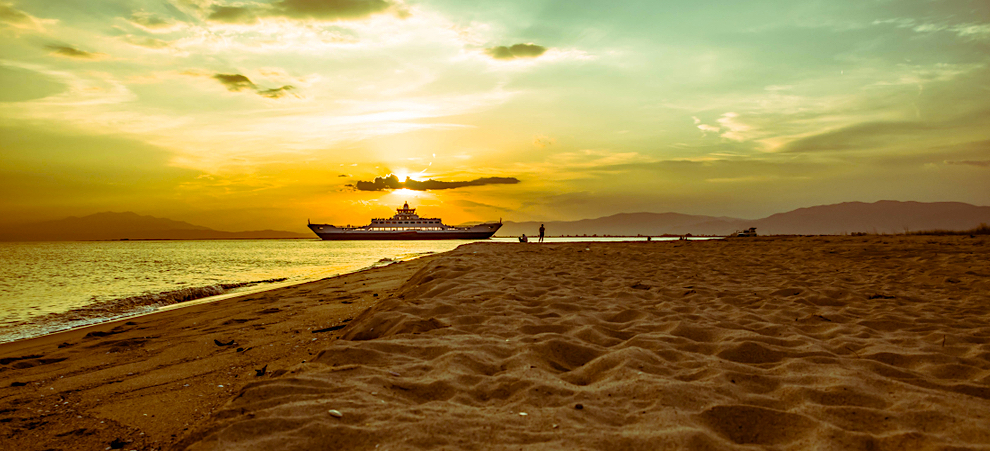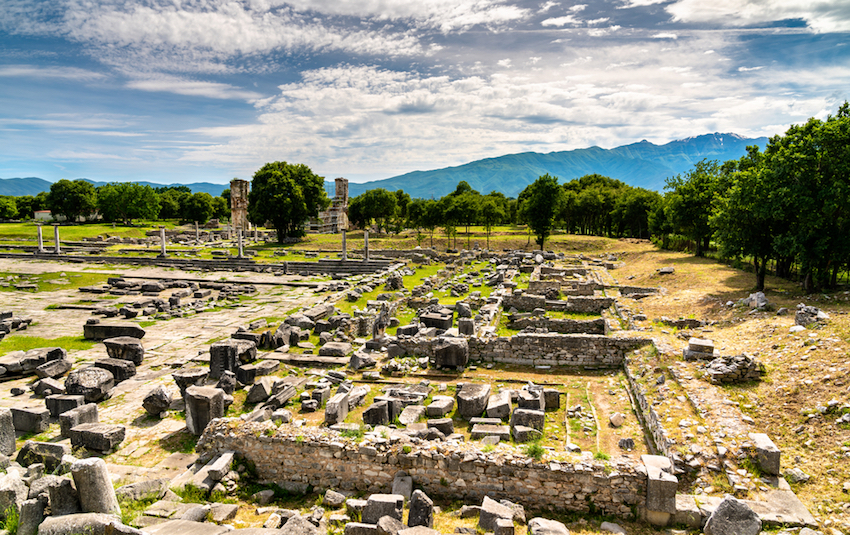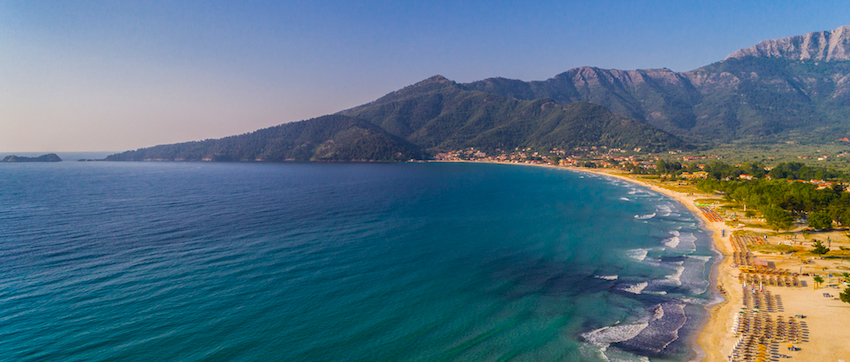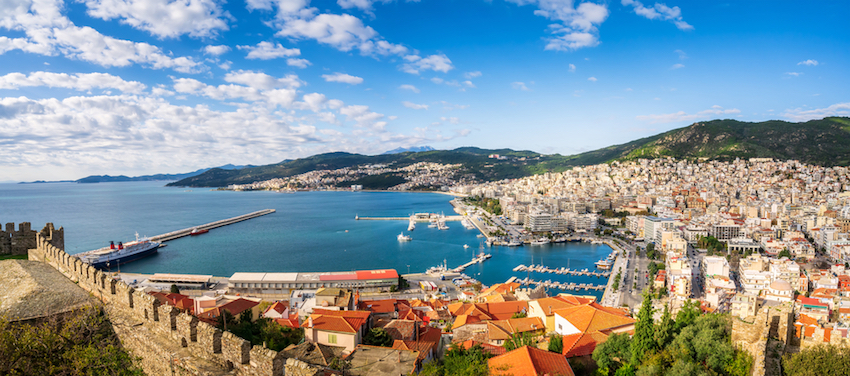
Thrace: Worth Visiting
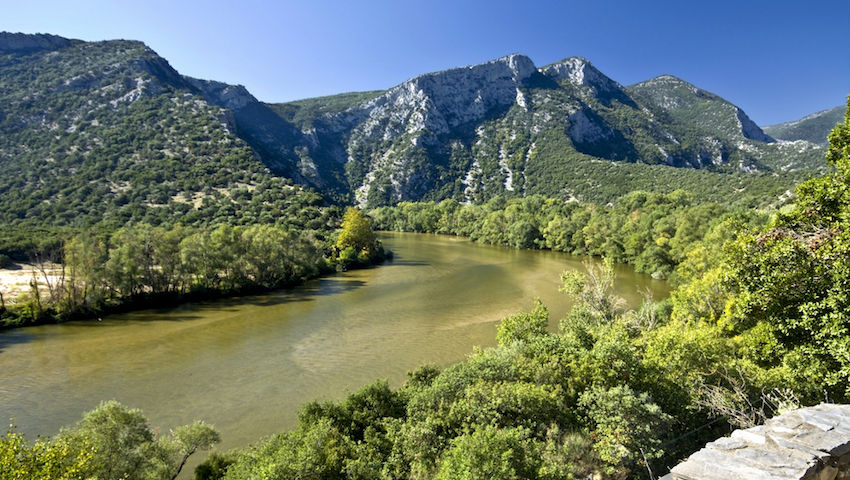
|
Travelers coming to Thrace have an assortment of places to visit including National Parks, rivers, lakes, wetlands, museums, monasteries, archaeological sites and villages and towns. Thrace has yet to experience the kind of tourism other parts of the Greek mainland get but for travelers with a long history of visiting Greece who feel like you have seen it all, prepare to be cured of that notion. Thrace is like going to a Greece in an alternative universe that still has your favorite food. |
|
The Nestos River is one of the most beautiful rivers in Greece with hiking trails, kayaking, rafting, trout fishing, and other outdoor activities. One of the largest rivers in Greece, it originates from the Rila Mountains of Bulgaria and flows into the Thracian Sea where its delta is an important wetland for plants, birds and wildlife. Most people begin their exploration in the town of Chrysoupolis, southwest of Xanthi, which is a kilometer from the river. |
|
The Nestos Adventure Park (not what it sounds like) is located at the Nestos’s River Gorge near the village of Galani and features many outdoor activities. To walk the Nestos River Gorge the road ends and the path begins at Galani Canteen, which is a great place to hang out and enjoy the scenery if you don't feel like walking. Nearby Galani Beach is a unique beach in Greece being on the sandy bank of the Nestos River. It can get crowded in the summer so the best time is the off-season. It is a river so there can be currents so be aware of that. |
|
The Path of Life begins in the city of Xanthi and follows the Kosinthos River north leading to a man-made waterfall and dam. There are benches along the way and signs with the names of plants and trees. Families should stick to the defined trail to the church of To Panagia Archangeliotissa but climbers and serious hikers can walk along the banks of the river and go as far as the 3 arched Hamidiye Bridge or explore the trails that branch off through the forests NE of the city. Hamidiye Bridge is a stone bridge built during the Ottoman period in 1904 by Sultan Abdul Hamid and blown up in the Second World War to slow the German advance or towards the end of the war to stop the Bulgarians, depending on who you ask. One end of the bridge is in ruins. |
|
Evros River Delta: The Maritsa River is the longest river in the Balkans. It begins in central Bulgaria and flows southeast until it reached Turkey where it becomes the Meric River near Eiderne. But from the Greek point of view it is the Evros and it forms much of the border between Greece and Turkey until it reaches the Aegean Sea. The Delta is a large delta, 150 square kilometers, shared by Greece and Turkey. It contains a rich assortment of wildlife including migratory birds like Pelicans, Flamingos, Wild Geese, more varities of fish than just about any river in the world including 100 pound catfish to name a few and wild boar, cats and other mammals and reptiles. There is more about the Evros River Delta on Matt's Alexandroupolis Page |
|
Samothraki: This small island between Limnos and Alexandroupolis is one to the most beautiful islands and boasts the highest mountain of all the Aegean islands. It is an island of forests and olive groves, springs and waterfalls and has some of the most abundant wildlife in Greece. Though virtually unknown to most tourists, many Greeks visit the island during July and especially in August. Daily ferry connections to Alexandropoulis and several a week to Kavala make the island easy to reach. The Winged Nike of Samothrace in the Louvre Museum in Paris came from here. More About Samothraki |
|
Museums |
|
The industrial town of Soufli has been known for its silk since Byzantine times and is the only town in Greece or Europe that raises silkworms. The Silk Museum of Soufli presents the art and history of silk manufactoring and is enjoyable for all ages. With a well-trained staff and informative exhibits including clothing, photos and video material this is an important and unique museum. The museum is houses in a small mansion at 73 E Venizelos Street. Other museums in the town include The Art of Silk Museum at 154 Vass Giorgiou Street and the Soufli Folk Art Museum “Gnafala” which is the Bourouliti's Family Private Collection, located at 12 EL.Venizelou, which also focuses on the silk trade. The Historical Museum of Soufli is located in the Brika mansion and contains historical photos and artifacts from the town. The Tzivre Silk Factory is located at the entrance of the city and was one of the most important silk production centers of the 20th century, a complex of 13 buildings, built in 1909 which lasted through several wars and finally closed for good in the early sixties. The factory included a 6000 meter cocoon warehouse and there are plans to make it into a museum. Currently it is used for cultural events, films, and other activities including the town's Christmas celebrations. |
|
Natural History Museum of Xanthi is tiny and most of the stuffed animals are from Thrace which means there are no elephants, giraffes, baboons or even dinosaurs. But there are lizards, bears, wolves and small mammals and plants too. And birds. Lots of birds. (All dead though. Sorry I forgot to mention that.) You won't confuse it with the NY Museum of Natural History but it is free and if you have kids they will probably enjoy it especially if they are burned out on ancient ruins. It is on Anatolikis Romilias 10, just east of the town and across the railroad tracks. |
|
Museum of Wheat and Bread is a unique museum located in the village of Lefkimi 52 km. northeast of Alexandroupoli. The museum presents educational programs and activities and displays agricultural and bread making tools from ancient to contemporary as well as art and artifacts from as early as the Neolithic period of Greece (6800-3300 BC). There is also an art gallery and an 18th Century stone threshing floor (Aloni). Also worth visiting in the area are the Dadia-Lefkimi-Soufli Forest National Park and the Petrified Forest of Lefkimi. |
|
Basketry Museum of Roma is a unique museum in the village of Thriorio near Komotini with various types of baskets and a history of basketry, one of the oldest crafts of humanity. Starting with ancient times the exhibits continue through the Byzantine period and focus on the craftsmanship of the Roma population of Thrace. (Known elsewhere as "Gypsies") There are also examples of basketwork by Pomaks , Bulgarians and Turks from wider Thrace region and Greeks from the Black Sea regions. |
|
Other museums in the area worth visiting are the Folk and History Museum of Xanthi and the Foundation of Thracian Art and Tradition and the House of Shadow Art Museum in Xanthi, Archaeological Museum of Komotini, Archaeology Museum of Abdera, Ethnological Museum of Thrace in Alexandroupoli, |
|
Archaeological Site of Mesimvria Zoni was a former colony of Samothraki whose fortunes peaked in the 4th and 5th Century BC and continued through the Macedonian and Roman periods before going into decline. Excavations have exposed the fortification wall with the towers, private houses inside the fortified area, the city's layout with the street network, public buildings, a sanctuary of Demeter and a temple of Apollo. |
|
Byzantine Monastery of Kosmositira, located in the town of Feres was built around 1152 by the Isaac Komnenos, son of the Byzantine emperor Alexios I Komnenos. During the Ottoman Period the church became a mosque but in 1940 it once again became a Christian Church. The interior contains 12th Century wall frescoes. Kosmosoteira has been proclaimed as patroness of the Thracians and is a pilgrimage center. It sits in the center of the modern town of Feres with its shops, restaurants, cafes, supermarkets and a couple hotels. |
|
Mountains and Meat |
|
The Rhodopes Mountain Range are mostly in Bulgaria but the southern part is in Greece and gives the region it's name. In Greek Mythology Queen Rhodope of Thrace and her husband King Haemus were changed into mountains by Zeus and Hera as punishment for offending the Gods. The area has been depopulated since the Second World War and the Greek Civil War which followed but this has led to an abundance of wildlife which is why most people come here. Also of interest are the Pomakochoria, the villages that are still inhabited by the Pomaks, generally considered to be descendants of Eastern Orthodox Bulgarians, and Paulicians, (who were supposedly Gnostics who followed the religions of Marcionism and Manichaeism in the 7th Century) who may have converted to Islam during Ottoman rule for the sake of convenience. (Rita Wilson is a Pomak on her father's side). These are some of the poorest villages in Greece but they are interesting enough so that there are even guided tours from Thessaloniki. The most popular villages to visit are Thermes for its curative hot mineral baths, Echinos for its mountain views, minaret and multi ethnic cemetery, and Kottani (photo) for its famous taverna of the same name which is an adventure to reach (5km of the road is unpaved) but well worth it for their variety of Greek, Turkish and Bulgarian dishes cooked to perfection in a beautiful setting far from civilization. The village of Kottani is tiny with maybe a dozen houses and a mosque. |
|
To Pilima is a traditional Thracean meat taverna in the small village of Pilima north of Xanthi and is considered one of the best places to eat in the area. Try to go any day except Sunday when it can get quite busy and expect friendly service, large portions, and the freshest meat and vegetables you will probably eat in your life. They have a beautiful outdoor area and for the winter months a fireplace inside. Roast meats on a spit, kokoretsi, kebabs, paidaikia, beefteki, brizoles and lots of things you have may have never seen or tasted before. Kane Stasi is one of, if not the best restaurant in Komotini, and people come from the surrounding area to eat here. The focus is on grilled meats, mushrooms (grilled and fried), soutsoukakia, brizoles, beefteki, and ribeye. (Yes. Ribeye!) Lots of mezedes, big servings and reasonable prices. It is located outside of town on the road to Alexandroupolis near the village of Roditis. Thank you Chris Murphey who also recommends Touristiko and Pharos both in Fanari and Gianna-Roula near Maroneia. Lots of places to eat in Soufli including Koutsouro Ouzeri a modern yet traditional mezedopouleion and Bereket for traditional Greek dishes as well as local specialities. If you want souvlakia, grilled meats, burgers with fries and salads try Vlassis, a hole-in-the-wall by the bus station that is popular with the locals. To Perazma at Ermou 13 is similar and famous for its rotisserie chicken and keftedes (meatballs) and soutzoukakia. For hotels try the centrally located 19th-century, stone-built Hotel Koukouli in a building that used to be a cocoon processing factory. If it is full try the Hotel Orfeas a block away. There are lots more restaurants on Matt's Alexandroupolis Page |
The Sea |
|
Keramoti is a coastal town with a sandy beach, lots of seafood restaurants and cafes, several hotels, a campground, a nudist beach and the port for the ferry to the island of Thassos. For those who want to explore the region but want to be on the beach Keramoti has just about everything a tourist would want. With more than a dozen restaurants in the port area and more scattered throughout the town finding a nice place to eat should not be a problem, keeping in mind that this is about as touristy as it gets in Thrace so try to go where the Greeks go and go for fish. O Glaros get's high marks from members of Matt's Greece Travel Guide on Facebook from people who both visit and live there. Also Sardeliko right across from where the sardine boats are docked, just down the quai from where the ferries to Thassos depart. Great food and fresh fish according to Christopher Bakken. |
|
National Park of Nestos Delta and Lakes Vistonida-Ismarida is the largest National Park in Greece an important wildlife preservation area where you can see migrating and local birds including pelicans, storks, flamingos, cormorants, herons, geese, ducks and hundreds of species of reptiles, amphibians, mammals and 21 different types of freshwater fish. The best way to explore the area is by rental car, preferably a jeep though it is not essential. Lake Vistonida is the 4th largest in Greece and the northern part is fresh water while the southern is brackish. The much smaller Lake Ismarida is the only freshwater lake in Thrace and is connected to the sea by a 5 km long canal. |
|
Monastery of Agios Nicholas in Porto Lagos is one of the most beautiful Monasteries in Greece, located on a small island in the shallow waters of Lake Vistonida, surrounded by wild birds and nature. If you are used to Monasteries that are on the tops of mountains or built into the rock face of cliffs this will be a welcome change and worth a visit. The two churches of the monastery, Agios Nicholas and Panagias Pantanassas are connected to the mainland and each other by wooden bridges. |
|
The small town of Lagos is located on the narrow piece of land that separates Lake Vistonida from the Aegean Sea. There are several cafes and restaurants in the harbor and the area is great for fishing. There is also a large bazaar flea-market on Sunday. There is a beach south of town on the Aegean and two hotels on the edge of town: Porto Vistonis and Porto Lagos Rooms, both popular with bird-watchers. There are more beaches, hotels and restaurants in the small port town of Fanari. Try the psarotaverna To Limani for fresh fish and the family run Hotel Fanari, a short walk from the beach. There is also a campground in Fanari. |
|
Keramoti Beach (photo), Perigiali Beach, Ammoglossa Beach, Myrodatou, Avdiron, Petrota. Imeros, Alkionas, Molivoti, Arogi Fanari are all located on the coast of Thrace and depending on the beach and when you go they may be full of families with beach beds and umbrellas and beach activities or you may have the place to yourself or with a handful of like-minded people. There are more beaches on Matt's Alexandroupolis Page |
Not Thrace but Close Enough |
|
Though not in Thrace, Ancient Philippi is one of the most important archaeological sites in Greece and the theater is still used for performances. Located north of Kavala and south of Drama the town was originally a colony of the island of Thassos but King Phillip, the father of Alexander the Great, was responsible for much of the remnants that we still see, along with the Romans after Octavia conquerded it, renamed it and turned it into a financial, administrative, and artistic centre. Don't forget the museum which contains most of the artifacts that they have found and continue to find in the ongoing archaeological excavations. |
|
Thassos is an island, popular with southern European and Balkan tourists but unkown to mainstream travelers, with beautiful beaches, wooded moutains, interesting antiquities, picturesque mountain villages and excellent accommodation. Ferry boats from Kerromotti to Thassos are frequent during the summer holiday season months. More About Thassos |
|
Kavala: Though it is actually in Macedonia, and is the main seaport for the region, you really can't go to Thrace and not visit the city at least for a few hours, if not overnight. Kavala is one of the most attractive of Greece's largest cities, rising like an amphitheatre from the beautiful harbor up to a huge Byzantine fortress, built on the ancient city of Neopolis. More About Kavala |
Car Rentals
You will need a car to really explore Thrace. Contact Elias at Swift Car Rentals in Athens if you are starting your trip from there. He also cooperates with car rental companies in Thessaloniki, Kavala and Alexandroupolis and can usually find whatever kind of vehicle you need.
Help Support Matt's Greece Guides
Do you enjoy using my site? Have you found it entertaining as well as useful? If so please show your appreciation by booking hotels through the travel agencies and the links found on my Hotels of Greece site. The small commission I make on the bookings enable me to keep working and in most cases you won't find them any cheaper by searching elsewhere.
You can find
hotels in Greece by location, price, whether or not it has a swimming pool, and see photos and reviews by using this link to booking.com which also contributes to my website when you book. If you are appreciative of all the free information you get on my websites you can also send
a donation through Paypal or Venmo
Join Matt Barrett's Greece Travel Guides Group on Facebook for comments, photos and other fun stuff. If you enjoy this website please share it with your friends on Facebook and other social media.
